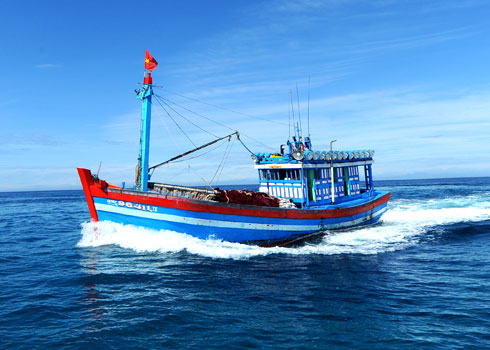Circular 19: Four Considerations in Determining the Risk of Collision of Vessels
This is the noteworthy content mentioned in Circular 19/2013/TT-BGTVT stipulating the application of international regulations for preventing collisions at sea.
To avoid the risk of collision on the voyage in all visibility conditions, all vessels must constantly maintain a proper lookout by sight and hearing, and must use all available equipment suitable for the current circumstances and conditions to fully assess the situation and risk of collision. Specifically: Article 7 of Circular 19/2013/TT-BGTVT outlines 04 notes for determining the risk of collision for vessels as follows:

Illustration (source: internet)
- Vessels must use all available equipment appropriate to the current circumstances and conditions to determine whether there is a risk of collision. If this cannot be confirmed, it must be assumed that there is a risk of collision.- Fully utilize the vessel’s radar equipment, observing at large range scales to detect the risk of collision early and conducting radar plotting avoidance or systematically tracking discovered targets.- Do not draw conclusions based on incomplete information, especially information provided by radar.- In determining whether there is a risk of collision, the following factors must be considered:
- There is a risk of collision if the bearing of an approaching vessel does not appreciably change;- The risk of collision may still exist even if there is an apparent change in bearing, particularly when approaching a very large vessel, a tow convoy, or another vessel at close range.View the full text of the regulation in Circular 19/2013/TT-BGTVT, effective from September 15, 2013.
Thu Ba
- Number of deputy directors of departments in Vietnam in accordance with Decree 45/2025/ND-CP
- Cases ineligible for pardon in Vietnam in 2025
- Decree 50/2025 amending Decree 151/2017 on the management of public assets in Vietnam
- Circular 07/2025 amending Circular 02/2022 on the Law on Environmental Protection in Vietnam
- Adjustment to the organizational structure of the Ministry of Health of Vietnam: Certain agencies are no longer listed in the organizational structure
- Vietnam aims to welcome 22-23 million international tourists in Vietnam in 2025
-

- Notable new policies of Vietnam effective as of ...
- 16:26, 11/04/2025
-
.Medium.png)
- Notable documents of Vietnam in the previous week ...
- 16:21, 11/04/2025
-
.Medium.png)
- Notable documents of Vietnam in the previous week ...
- 16:11, 02/04/2025
-
.Medium.png)
- Notable new policies of Vietnam to be effective ...
- 16:04, 02/04/2025
-
.Medium.png)
- Notable new policies of Vietnam effective from ...
- 14:51, 21/03/2025
 Article table of contents
Article table of contents
